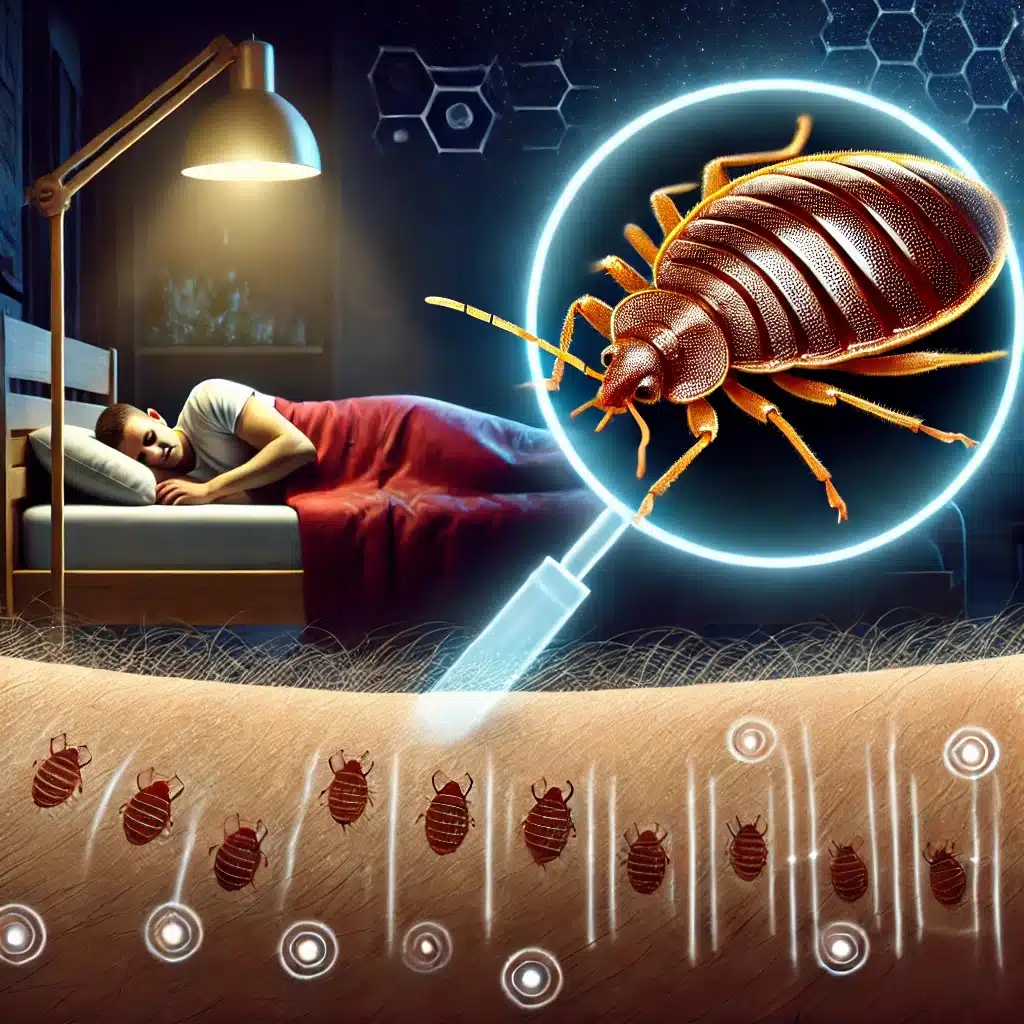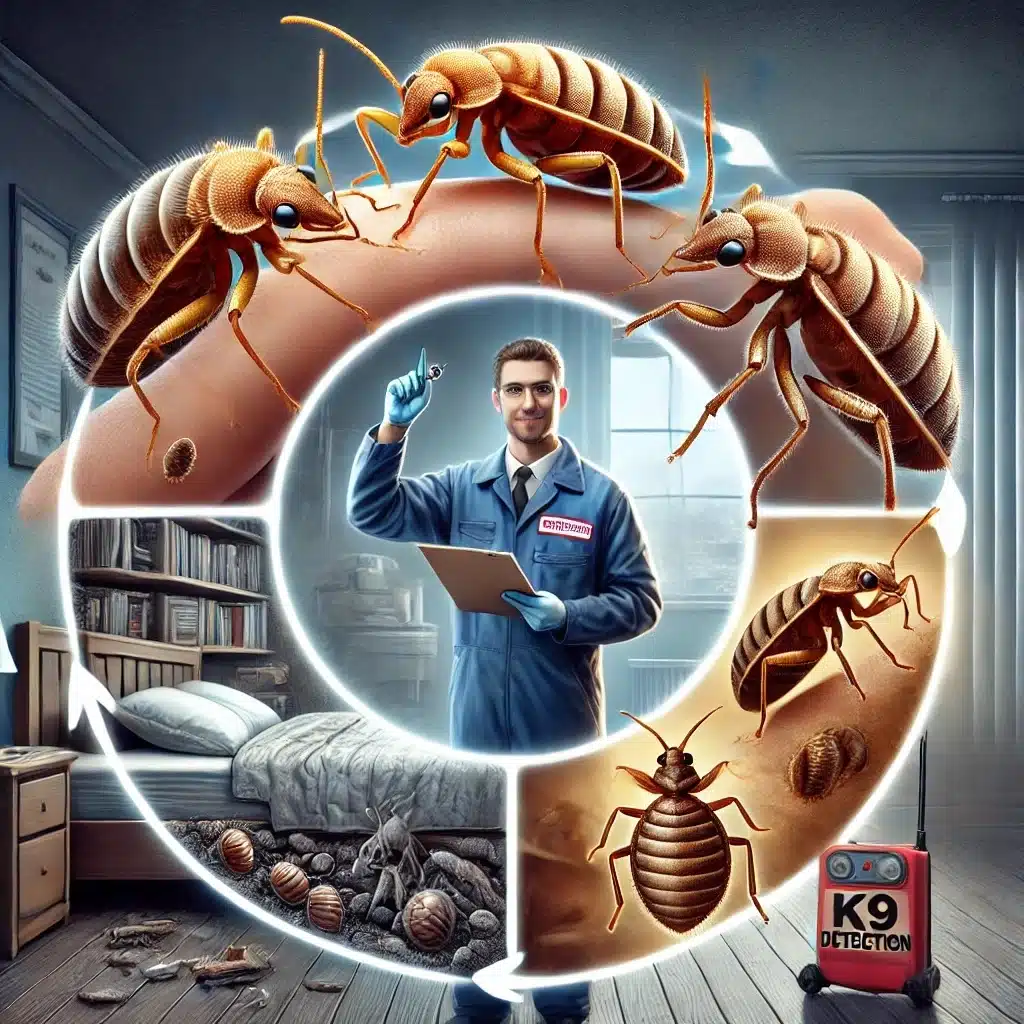If you’ve ever woken up with itchy red bites and wondered, “Why me?” then you might be dealing with bed bugs. These tiny pests are notorious for sneaking in during the night and making themselves at home—quite literally—by feeding on your blood. Understanding bed bug feeding habits and patterns can be the key to getting rid of them for good. It’s not just about scratching the itch; it’s about knowing what you’re up against.
At ThermoPest, we’ve seen it all when it comes to bed bugs, and we’ve got the insights to help you understand why these pests behave the way they do—and, most importantly, how to stop them.

When and Why Do Bed Bugs Feed?
Bed bugs are sneaky little things, and their feeding habits reflect that. Ever noticed how the bites seem to show up after you’ve been sound asleep? That’s because bed bugs are nocturnal feeders. They’re most active between 1 AM and 5 AM, when you’re least likely to notice them. These critters rely on your body heat and the carbon dioxide you breathe out to find you. It’s almost like they have a built-in GPS leading them straight to their midnight snack—your blood!
But here’s the thing: bed bugs aren’t feeding constantly. They can go weeks, even months, without a meal. So, if you think you’ve gotten rid of them just because the bites stopped, think again. They’re probably just waiting for the next opportunity.
How Do Bed Bugs Feed?
Let’s talk about the mechanics of how these pests feed. Bed bugs have sharp, needle-like mouths called proboscises that pierce your skin, allowing them to feed on your blood. Each feeding can last anywhere from 3 to 10 minutes. If that doesn’t make your skin crawl, I don’t know what will! And the worst part? You probably won’t feel a thing at the time because bed bugs inject an anaesthetic into your skin as they feed.
Now, unlike some pests, bed bugs don’t live on you. They feed, then retreat to their hiding spots in mattresses, furniture, or cracks in the wall. They might not be buzzing in your ear, but trust me, they’re still close by.
Feeding Patterns: Why They Bite in Clusters or Lines
If you’ve noticed bites in clusters, straight lines, or zigzag patterns, that’s a tell-tale sign of bed bug activity. But why do they bite like that? Here’s a little-known fact: Bed bugs are cautious feeders. Instead of settling down in one spot, they tend to take several small bites in one area. This results in those distinct bite patterns that show up on your arms, legs, or neck.
And it’s not just one-bed bug doing the damage. When you’re dealing with an infestation, you could have dozens of these pests feeding at the same time. That’s why the bites often appear grouped together in a line or patch. It’s their way of testing the waters, so to speak.
How Often Do Bed Bugs Feed?
While bed bugs are known for being able to survive without feeding for long periods, their ideal feeding schedule is every 5 to 10 days. However, this depends on how easy it is for them to access a food source (that’s you!). In well-established infestations, the bugs can feed more regularly because there’s a constant supply of blood—meaning the bites could seem relentless.
During the feeding process, bed bugs grow and molt, which is why they need to feed multiple times throughout their life cycle. A baby bed bug, or nymph, has to feed at least five times before it becomes an adult. With the right conditions, they can mature in about a month and continue to feed and reproduce.
What Science Tells Us About Bed Bug Feeding Behaviour
Researchers at Rutgers University have spent years studying bed bug behaviour, and one of the key findings is how bed bugs can sense when it’s time to feed. According to their studies, bed bugs are drawn to body heat, carbon dioxide, and certain chemicals found in human sweat. They know exactly when you’re asleep, which is why you’ll rarely notice them during the day.
Interestingly, bed bugs don’t feed every night, even if you’re in the same bed. Studies show that some bed bugs will “skip a meal” to avoid being detected. It’s like they know not to overstay their welcome, making it even harder to catch them in the act.
How Feeding Habits Influence Infestations
The more bed bugs feed, the faster they reproduce. After a good meal, female bed bugs lay eggs—up to 500 eggs in their lifetime! These eggs hatch into nymphs, which then start feeding and maturing, leading to a rapidly growing infestation if not addressed.
Because bed bugs often feed in hidden areas, infestations can grow unnoticed. By the time you’re seeing multiple bites, you could be dealing with a sizeable population. At ThermoPest, we’ve seen cases where bed bugs were hiding in bed frames, behind electrical outlets, and even in books!
ThermoPest’s Approach to Breaking the Feeding Cycle
So, how do you stop bed bugs from feasting on you every night? At ThermoPest, we use a combination of K9 detection and heat treatment to not only locate the pests but eliminate them at every stage of their life cycle. Heat treatment is especially effective because it penetrates the hiding spots where bed bugs retreat after feeding. And since bed bugs can’t develop resistance to heat, it’s the most reliable method for cutting off their food supply and breaking the infestation cycle.
No more bites, no more hiding bugs, and most importantly, no more sleepless nights worrying about what’s lurking in your mattress.

Think You Have Bed Bugs? Don’t Let Them Keep Feeding!
If you’re waking up with bites or spotting signs of bed bugs, it’s time to take action. Understanding their feeding habits can help you outsmart them, but the fastest way to get rid of bed bugs is to call in the pros. At ThermoPest, we’re experts in identifying and eliminating bed bugs using proven, science-backed methods.
Don’t let bed bugs keep using you as their midnight buffet. Give us a call, and we’ll make sure they never get another meal in your home.
